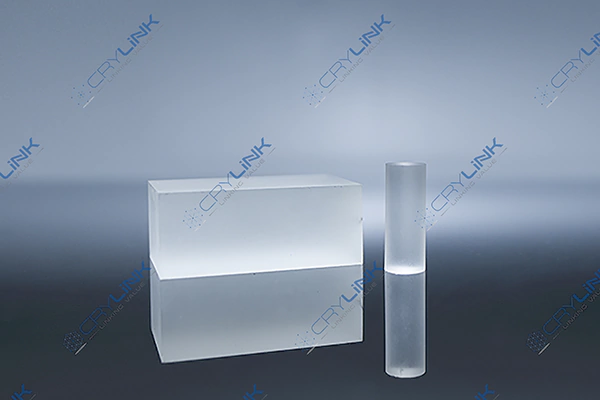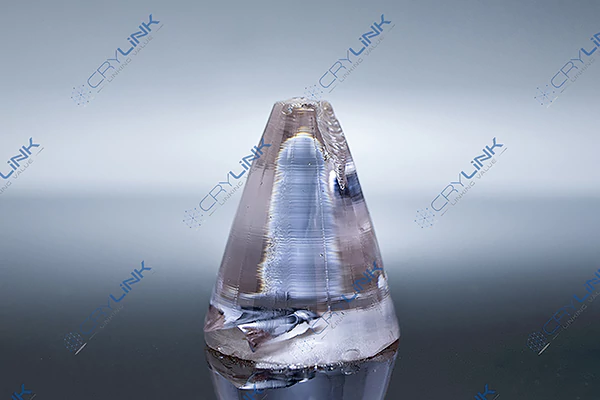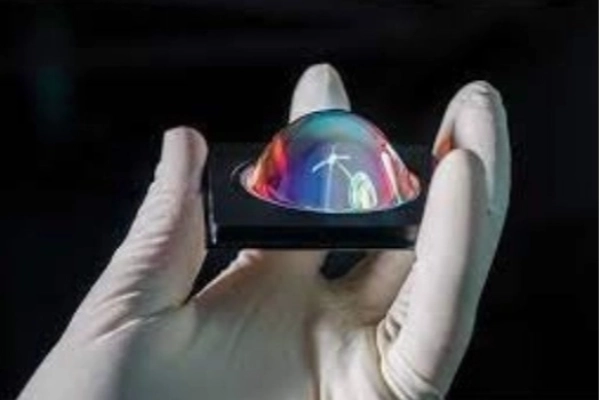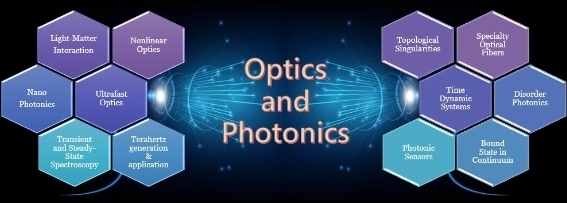Introduction
Optical crystals have a rich history of multifaceted applications, spanning from their use in crafting exquisite gemstones to their pivotal role in cutting-edge technological advancements. This comprehensive guide aims to immerse you in the captivating realm of optical crystal growth techniques. Throughout this journey, we will meticulously unravel the intricacies of methods and processes employed to fabricate these exceptional and invaluable materials.

Chapter 1: Understanding Optical Crystals
Optical crystals stand as crystalline marvels, celebrated for their extraordinary optical properties that transcend various industrial domains. In this section, we will embark on a journey to fathom the captivating characteristics that underpin the inherent value of optical crystals.
The Optical Properties of Crystals
Optical crystals unveil a myriad of optical properties, each contributing to their exceptional nature. These properties encompass the mesmerizing phenomenon of birefringence, which leads to the splitting of light into two polarized rays as it traverses the crystal. We shall explore the significance of optical transparency, allowing these crystals to transmit light with remarkable clarity. Moreover, their high refractive indices, the degree by which they bend light, will be scrutinized, offering insights into their applications across diverse industries.
Common Types of Optical Crystals
Within the vast landscape of optical crystals, a multitude of varieties exists, each boasting unique attributes and applications. Our exploration will lead us to some of the most prevalent optical crystals in the field. Sapphire, renowned for its exceptional hardness and scratch resistance, will grace our discussion. Quartz, treasured for its ability to generate precise frequencies in electronic devices, will also find its place. Furthermore, the spotlight will shine on Yttrium Aluminum Garnet (YAG), celebrated for its role in the world of lasers and optics.

Chapter 2: Crystal Growth Techniques
The process of growing optical crystals is an intricate and nuanced endeavor, demanding the implementation of specialized techniques to yield high-quality crystals. In this section, we shall embark on a comprehensive exploration of these techniques, unearthing the secrets behind their application.
Czochralski Method
The Czochralski method stands as one of the most time-honored and traditional approaches to crystal growth. This technique relies on a deliberate and gradual extraction of a seed crystal from a molten material. The process unfolds in a meticulously controlled environment, where temperature and cooling rates play a pivotal role. By carefully withdrawing the seed crystal while rotating it, a single crystal structure begins to form.

The applications of the Czochralski method are diverse, with its prowess extending to the creation of artificial gemstones. By subjecting the method to meticulous control, gem-quality crystals can be synthesized, echoing the allure of their natural counterparts. The controlled growth and the ability to tailor the crystal’s properties make this method indispensable in the realm of gemstone production.
Hydrothermal Growth
Hydrothermal growth emerges as a process reliant on the exacting conditions of high temperature and high pressure. This technique leverages the principles of supercritical fluids, where substances exist as both liquid and gas, to foster the growth of crystals. In this carefully regulated environment, crystals can be cultivated, and their properties finely tuned to meet specific requirements.
The applications of hydrothermal growth extend far and wide, with a particular emphasis on producing large, high-quality crystals. The controlled conditions allow for the growth of intricate and pure crystals, making this technique indispensable in both scientific research and commercial endeavors.
Flame Fusion Technique
The flame fusion technique, often referred to as the Verneuil process, is a widely adopted method for synthesizing gemstones. This approach relies on the fusion of powdered elements or compounds in a high-temperature flame. The molten material rapidly cools and solidifies, forming a single crystal structure.
The science underlying this method revolves around the precise control of temperature and the composition of the starting materials. The significance of the flame fusion technique extends notably to the jewelry industry, where it serves as a means to produce synthetic gemstones. The resulting gemstones bear the optical and physical characteristics sought after in the world of jewelry, making them a coveted choice for adornment.
As we unravel the intricacies of these crystal growth techniques, we begin to appreciate the fusion of scientific innovation and artistry that underpins the creation of optical crystals. These methods, whether rooted in tradition or driven by cutting-edge technology, continue to shape industries ranging from scientific research to the aesthetics of jewelry design.
Chapter 3: Cutting and Polishing
Upon the completion of the growth phase, optical crystals embark on a journey of refinement, characterized by precision cutting and polishing processes. This chapter unveils the art and techniques required to shape and perfect optical crystals, ultimately achieving their desired optical properties.
Precision Cutting
Precision cutting represents the pinnacle of craftsmanship and technological precision in the world of optical crystals. It entails the utilization of advanced machinery and the expertise of skilled artisans to meticulously shape the crystal with pinpoint accuracy.

This intricate process hinges on the crystal’s unique characteristics, such as refractive index, hardness, and optical properties. Precision cuts are executed to eliminate imperfections, reduce light dispersion, and create specific facets that optimize the crystal’s interaction with light. The angles and facets created during precision cutting hold the key to the crystal’s brilliance and optical performance.
In essence, precision cutting transforms the raw crystal material into a masterpiece of optical artistry, serving a myriad of purposes, including precision optics, scientific instruments, and ornamental adornments.
Optical Coating
The significance of optical coatings in the world of optical crystals cannot be overstated. These coatings serve as the final touch in enhancing the crystal’s performance, fine-tuning its optical properties to meet specific requirements.

Diverse coating techniques are employed to address various optical challenges. Anti-reflective coatings, for instance, minimize reflection and maximize light transmission through the crystal. Dichroic coatings, on the other hand, enable control over the crystal’s ability to transmit different wavelengths of light, finding applications in lasers and optical filters.
The application of optical coatings is a pivotal step in realizing the full potential of optical crystals. It elevates clarity, contrast, and optical efficiency, making crystals invaluable across an array of applications, from laser systems to camera lenses and scientific instruments.
As we traverse the realms of cutting and polishing optical crystals, we unveil the marriage of artistry and precision that underpins the transformation of these remarkable materials into optical marvels. These processes culminate in the unlocking of the crystal’s optical potential, enabling them to excel in diverse applications reliant on their unique optical properties.
Chapter 4: Applications of Optical Crystals
The versatile nature of optical crystals renders them indispensable across a broad spectrum of industries. This chapter unveils some of the most prominent and diverse applications of these remarkable crystals.
Laser Technology
Optical crystals take center stage in the realm of laser technology, where their unique properties play pivotal roles in laser systems. Crystals like YAG (Yttrium Aluminum Garnet) serve as gain media in solid-state lasers. Their exceptional optical qualities, including high refractive indices and optical transparency, make them ideal candidates for amplifying and emitting laser light. These crystals are at the core of laser systems used in medical, industrial, and military applications.
Optics and Photonics

The domain of optics and photonics thrives on optical crystals, employing them extensively in various components and devices. These crystals find homes in precision optics, where their ability to refract, reflect, and transmit light with precision is harnessed. Lenses, prisms, waveplates, and optical filters crafted from optical crystals form the backbone of optical systems used in research, telecommunications, and imaging technologies.
Jewelry and Aesthetics
Beyond their technological prowess, optical crystals also captivate the world of jewelry and aesthetics. Gem-quality optical crystals, meticulously cut and polished to perfection, adorn exquisite jewelry pieces and decorative items. Sapphires, emeralds, and other optical crystals are celebrated for their brilliance and vibrant colors, making them prized possessions and coveted adornments.
The applications of optical crystals transcend boundaries, from powering cutting-edge technology to adding luster to the world of aesthetics. Their ability to manipulate light with precision continues to fuel advancements in various industries, enriching our lives with both functionality and beauty.
Conclusion
In conclusion, the world of optical crystal growth techniques is both fascinating and diverse. From traditional methods like the Czochralski process to cutting-edge technologies in hydrothermal growth, these techniques continue to shape industries ranging from science and technology to aesthetics and fashion. Understanding the nuances of crystal growth and application allows us to appreciate the beauty and utility of these remarkable materials.
FAQs
- Q1: Can optical crystals be naturally occurring?
- A1: Optical crystals can be found in nature, but many are also synthesized for specific applications.
- Q2: Are optical crystals expensive?
- A2: The cost of optical crystals varies depending on the type, quality, and intended use.
- Q3: What are some famous gem-quality optical crystals?
- A3: Examples of gem-quality optical crystals include sapphires, rubies, and emeralds.
- Q4: How do optical coatings enhance crystal performance?
- A4: Optical coatings improve crystal performance by minimizing reflections and enhancing light transmission.
- Q5: What is the role of optical crystals in laser technology?
- A5: Optical crystals serve as gain media in solid-state lasers, amplifying and emitting laser light.

Frank
Frank graduated from the University of Shanghai for Science and Technology, majoring in optics. As a technical engineer at Crylink Company, he deeply understands crystal materials and laser components.
Related Video(s) with this Article
Related Product(s) with this Article
Related Application(s) with this Article
